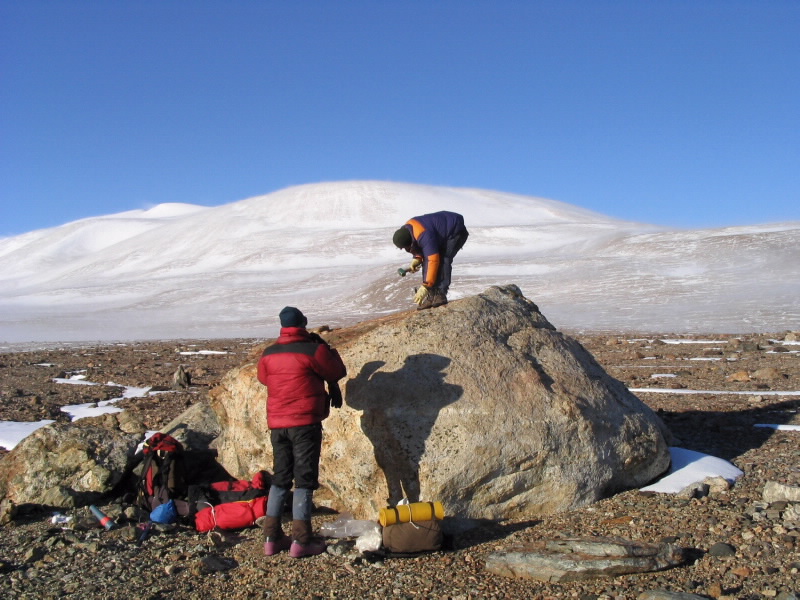In February 2012, two ANSTO researchers travelled to Antarctica to find out whether there is a historical connection between changes in solar activity and climate variability on Earth.
 |
While researchers agree that climate variability over the last century is largely due to human causes, it is possible that solar activity has had a significant effect on the Earth’s climate over a much longer period of time.
There have been times throughout history where sun activity and climate change seem to be connected. For example, few sunspots were observed on the sun between 1645 and 1715AD, which coincided with “The Little Ice Age” on Earth.
Using Antarctic ice cores as a record of history
Polar ice sheets are made up of layers, with each layer indicating an annual snow fall. A year-to-year record of the earth’s atmosphere becomes trapped in each layer, and can be analysed by taking a vertical core sample through the ice and examining the contents of each layer.
Antarctic ice core samples have been used to determine historical levels of carbon dioxide and methane in the atmosphere. These results show that the concentration of carbon dioxide in the current atmosphere (370 parts per million) is higher than it has been for the last 800,000 years.
Measuring solar activity using radioactive beryllium
The Earth is continually bombarded with cosmic rays, which produce radioactive forms of beryllium in the atmosphere (beryllium-7 and beryllium-10). These beryllium isotopes are transported through the atmosphere to the Earth’s surface and are detectable in ice cores.
ANSTO researchers will measure the amount of beryllium isotopes in each layer to form a historical record of sun activity, to see if this matches changes in climate patterns over time.
Greater solar activity means an increase in the magnetic field surrounding the sun. The electrically charged particles that make up cosmic rays are deflected by the sun’s magnetic field, resulting in the production of fewer beryllium isotopes in the atmosphere.
Researchers will find fewer beryllium isotopes in a layer that correspond to years of high solar activity, and more beryllium isotopes in layers from low solar activity periods.
Published: 14/08/2012


